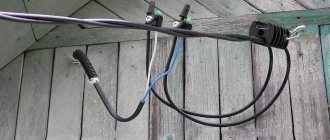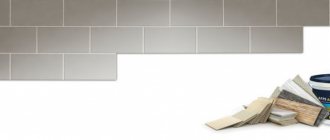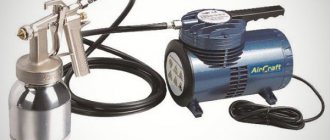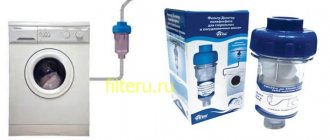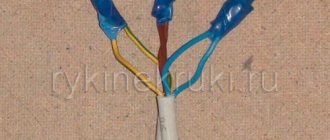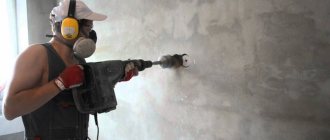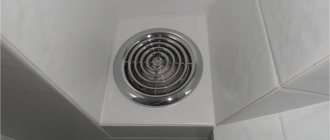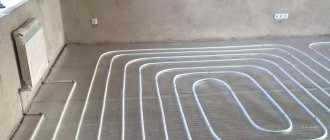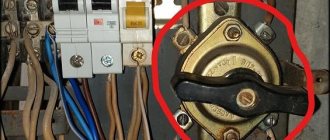Today we will look at the issue of choosing a cable for connecting a video intercom and its various components: calling panel, electromechanical lock, etc.
A video intercom is a system that consists of individual technical elements connected to each other via cables. The latter sometimes play a decisive role in the operation of the entire installation. A cable that does not meet the requirements of the system or is of poor quality may cause failure or damage to the video intercom. When choosing this component, you need to pay attention to both its characteristics and the manufacturer’s brand.
Peculiarities
This technique combines the functions of an ordinary intercom with the possibility of video surveillance. A video intercom is a system consisting of the following nodes:
- monitor;
- locking device;
- intercom calling panel;
- power unit.
In order to connect these devices, various cables are used. You should focus on the manufacturer’s requirements, technical tasks and climatic conditions. Correct calculation, high-quality installation, high quality materials are the key to long-term operation of the intercom system without failures.
Main components
If we consider homemade projects, a typical video intercom consists of the following components:
- calling panel with camera and head unit;
- built-in or external server serving requests;
- executive equipment (lock, sensors) and its controllers;
- PC, phone or tablet with control software.
Do-it-yourself video intercom often means using equipment that supports the SIP protocol, an Asterisk server and a 1-wire network, laid, for example, using DS2413 modules. The latter are managed using the OWFS software package. But today there are simple Wi-Fi calling panels on sale that were originally designed to interact with mobile applications, for example, Tantos Corban Wi-Fi.
Popular video intercom models:
- Amroad DP 101. This is an inexpensive and functional solution with support for PoE power, audio-video transmission and a built-in lock control interface.
- Robin S.V. The solution is compatible with IP ATC software 3CX Phone System, has a set of audio codecs with the ability to choose a convenient one, and encodes video in H.246. Virtual PTZ is provided.
- Mobotix T24. This intercom supports SIP and VoIP protocols, can compress the stream in H.264 and is equipped with a PTZ camera device. As in other solutions, there are interfaces for actuators.
A simpler option is an embedded video panel like:
- Activision AVC-305;
- Corban mentioned above;
- HIKVISION DS-KH6310-WL;
- Slinex ML-20IP, and others.
Let's look at how to make an intercom with your own hands, using the Tantos Corban Wi-Fi panel as an example.
What materials are the cables made from?
The conductors can be copper or steel. Wires made of alloys and steel wires coated with copper are available for sale. All of them will differ in their characteristics. Cables should be purchased from trusted suppliers.
Conductors made of copper have lower resistivity per linear meter and are more resistant to wave interference. Copper strands are durable and flexible, making installation easy. Less susceptible to corrosion and oxidation.
Steel conductors are used in inexpensive products; such cables are not recommended. They have a lot of resistance and weight. Steel is a less efficient conductor than copper. As the signal passes through it, it loses power. It is not very convenient to work with such material due to the greater rigidity of the wire.
The insulating material of the shell plays an important role. The durability of the system depends on its material. If the line is laid outside the room, materials that are resistant to temperature changes and ultraviolet rays are preferred.
It is important to choose insulation that will not crack in the sun. A cable with damaged insulation is unsuitable for use. Through cracks in the insulation, water can enter the electrical line, and then the line can become unusable.
Shielded cables are available. Shielding protects the signal from electromagnetic fields created by current-carrying power lines. Typically the screen is made in the form of a mesh of copper or steel wire. Foil tape is used as a protective layer. Such a power line can be grounded.
Wires should be selected for specific tasks:
- transmission of video signal to the subscriber device and additional monitors;
- supplying electrical power to the electromechanical lock and surveillance cameras.
For the system to work correctly, it is important to correctly calculate the line length, core cross-section, line attenuation and power supply power.
Video peephole installation
Correct installation of the camera will provide a good overview and protect the device from falling out. Many people do not know how to install a video peephole themselves. First you need to pull out the old optical model. A modern device will be installed in this hole. If the door did not have an optical peephole, then you need to make a corresponding hole. It is best to use an electric drill here.
The most difficult stage of installation is the location of the peephole. The lens should not be obscured by door elements. In addition, the peephole should be fixed as much as possible. Most often, the size of a homemade structure is much smaller than the prepared hole in the door. After installing the homemade device, you need to move on to running the cable. It supplies electricity and broadcasts video.
Proper cable routing is very important at this stage. It should not be damaged when opening and closing the door.
It is also important that the cord does not interfere with the passage.
Conclusion
Making a video eye with your own hands is not difficult. The device will help residents control the situation on the landing and near the front door. Broadcasting from the device is available even at a remote distance. In order for a homemade device to function similarly to factory models, you need to perform the installation correctly. In addition, the creator will be able to repair the video peephole himself if necessary. The skills acquired while creating the device will help you carry out repair work with ease.
Varieties
UTP (twisted pair)
A multifunctional cable, which consists of one or more pairs of insulated cores, twisted together, enclosed in plastic insulation. Inexpensive and easy option. It has different degrees of screen protection according to the marking:
- UTP – unshielded;
- FTP – with a common foil screen;
- STP – twisted pair with general insulation;
- S/FTP – with an individual foil screen for each pair and a common copper shell;
- U/FTP – availability of general shielded protection;
- U/STP – presence of a screen for each pair separately.
The insulation of unshielded twisted pair (UTP) cable is made of polyvinyl chloride (PVC). Used indoors at short distances. Inside, along with the cores, there is a nylon thread, which is needed to give mechanical strength and rigidity to the wire.
Twisted pair FTP differs from UTP by the presence of a protective screen that is more resistant to external interference and mechanical damage. In installation, 4-core and 8-core wires are most often used. They are lightweight, flexible, easy to install, and are offered in a huge range on the modern market.
RG (coaxial cable)
It consists of a conductive core and a screen, located coaxially and separated by an insulating polymer. You can find a protective layer of foil. The design eliminates energy loss due to radiation and protects the cable from electromagnetic interference. They differ in material, degree of shielding, diameter and rigidity. Doesn't bend well during installation.
The conductor is made of copper or steel. Insulated from negative climatic conditions with polypropylene or polyethylene foam. Then covered with a layer of foil or braided shielding made of copper or aluminum. Enclosed in rubber or plastic insulation. Such wires are classified according to their characteristic impedance:
- 50 Ohm - a well-balanced cable with minimal signal loss and sufficient strength;
- 75 Ohm - durable and inexpensive, easy to install cable.
This is an inexpensive, rigid cable available in a wide range. To connect such a wire to devices, you need a connector. Connectors for crimping such a cable are more expensive.
KVK (combined video cable)
It is a coaxial cable combined with power wires. Sometimes in addition there are wires for connecting additional devices. This cable is convenient to use where video surveillance power and signal transmission are carried out from one point. This greatly simplifies installation and saves time. The price per linear meter will be higher than for ordinary wires. It is important to calculate the cross section correctly. The type of insulation determines the operating conditions and temperature range in which the multicable will be used:
- PVC insulation has high plasticity even in cold weather, and is resistant to ultraviolet radiation and chemical attack;
- rubber insulation is elastic and resistant to high temperatures;
- fluoroplastic insulation is considered very durable and rigid.
Some types of such wires include a supporting steel cable, also protected by insulation, which is important for outdoor installation. Scope of application according to marking:
- KVK-V – for indoor installation;
- KVK-P – for external installation;
- KVK-PT – for external installation, with supporting steel cable included;
- KKSVG and KKSPG – wires with a stranded conductor for indoor and outdoor installation, respectively;
- KKSV and KKSP are wires with a single conductor used for analog video surveillance systems.
A combined cable will be an excellent solution for installing a video intercom if a lot of wires are required, for example: for data transmission, for supplying voltage, for controlling a camera drive or for an intercom.
The electrical installation equipment industry offers a huge number of products from Russian and foreign manufacturers. The price/quality ratio does not always “work” - you should not overpay for a brand if products from a different price category can cope with the task. Products from lesser-known companies are capable of performing the assigned tasks. Much depends on the quality of installation and operating conditions.
For information about which wires to lay, the features of connecting the intercom and its installation, see below.
When installing an intercom, special attention is paid to the quality of the cable - whether it meets all standards and requirements. This is due to the fact that not all types of wires are suitable for establishing communication between the visitor and the subscriber.
Content
Connection example
The device is supplied with everything you need:
- the video panel itself;
- protective visor and mounting brackets;
- dowels and screws;
- wireless antenna;
- connecting wires for power supply, connection to the Ethernet network and communication with the lock.
The gadget is equipped with a 1.3 MP camera with IR illumination and a sensitive microphone. For a small country house, this solution can be called optimal.
Interaction with the intercom occurs through the vnOme application.
The panel is connected according to the instructions. Wiring diagram:
Important:
- polarity must be strictly observed;
- if you connect a wired network to the video intercom using an Ethernet cable, the wireless module will automatically turn off;
- The panel is designed to control locks using normally open contacts. If you plan to pair Corban with a normally closed lock, an additional controller is required;
- if the lock is electromechanical, the manufacturer recommends adding a varistor with a cutoff voltage of 20 V, or a reverse polarity rectifier diode, to the circuit parallel to its winding. This is necessary to suppress self-induction impulses.
How to post
The gadget is placed directly on the wall or on a corner bracket in a convenient place. Please note that the panel should not be exposed to direct sunlight or illumination falling on the camera. It is also not advisable to leave Corban unprotected from precipitation.
The developer recommends installing the device at a height of about one and a half meters.
The power supply can be mounted in any convenient place. Possible hidden placement.
Initial setup
After installation, the panel must be configured. To do this you should:
- connect power. If everything is successful, the device will first emit a short beep, and after 40 seconds it will produce a melodic trill;
- After that, press and hold the call button for 3 seconds. The gadget will make a long “beep” sound;
- the button is released and pressed again for 3 seconds until another long beep is received;
- the previous paragraph is repeated again. If everything is done correctly, Corban will play a voice recording of “The panel is updating the network settings”;
- The gadget will notify you of the end of the process with the entry “Panel in Wi-Fi settings configuration mode” and a melodic trill.
Important: the manufacturer has set a two-minute timeout for switching to configuration mode. If you just turn it on and do nothing, after 2 minutes you will no longer be able to set up the video intercom, and you will have to turn it off and on again.
When using a wired network, the device will receive a network address via DHCP; no Wi-Fi configuration is required.
Working with the application
All interaction with the intercom occurs through the vhOme program, available for Android and IOs. Once the network is connected and the panel is in pairing mode (or turned on via Ethernet), final configuration is performed through this software.
Let's look at an example of working via wireless communication. Steps on Apple smartphones and tablets:
- go to wireless network settings;
- find an access point there with a name starting with a UID and connect to it;
- go to the vhOme application and start adding a new device by selecting the “+” symbol;
- select “Wi-Fi settings”;
- enter the SSID and password of your home Wi-Fi. The process of applying settings sometimes takes up to several minutes;
- Next, set the intercom name and access password.
Important: The default Corban password is 1234.
The process for Android is similar:
Important details:
- If you enter the password incorrectly, you will not be able to change it programmatically. In this case, reset the settings;
- If you need the functionality of broadcasting calls to a mobile device, your home router must have access to the global network.
You can add a previously connected device in the application through the “Connected Devices” menu item. If the tablet/smartphone and the panel are on different networks, they can be paired by scanning the QR code on the back of the video intercom.
Calling and opening the door
When a visitor presses the call button, the intercom sends a signal to the call device. Then you can talk to the person who came and open the door for him.
The application also allows you to view the camera image at any time and unlock the lock even without calling.
Parallel operation with four smartphones is supported. In addition to them, the panel has a web interface accessible via a browser. To access it, you need to find out the IP address of the device, which is done using the proprietary Tantos Device Manager utility.
The received IP is entered into the address bar of the browser. The system will ask for a login and password and display the main page of the built-in web server.
Important: you need a special plugin, which the gadget will prompt you to install upon first login.
From the web interface you can view images, control the lock and advanced settings.
Requirements for intercom wire
Combined high-frequency cable
Each type of construction work has its own specific and general operating requirements. For intercom wires they are as follows:
- To power the external unit and electronic lock, the voltage should not exceed 24V.
- If frequent voltage fluctuations are observed, it is recommended to temporarily de-energize the device, otherwise the likelihood of a short circuit and fire increases.
- The intercom and all auxiliary elements are placed away from sources of moisture and environments with high humidity.
- If there is damage in the cable as a result of mechanical, chemical or thermal effects, replace the damaged section of the circuit or the entire cable. RK-75 - Coaxial cable for connecting a video intercom with a copper central conductor
- The electromagnetic field emanating from some types of wires can distort the operation of the intercom, so it is more advisable to give preference to modifications equipped with separate shielding.
- If the resistance value is 20 Ohms, the device is used to establish long-distance communications.
For uninterrupted operation of the electromagnetic lock, electricians recommend connecting a separate cable to it.
The length of the wire directly depends on the distance from which the call panel is located. If the distance is no more than 15 meters, use any types of cables; if the interval is significantly larger, experts recommend considering the following models:
- UTP;
- STP;
- FTP;
- KSPV-4*0.5;
- SHVEV;
- SHVEP.
STP KSPV-4x0.5 FTP UTP ShVEP ShVEV
The peculiarity of the models is their combined structure. They are designed to work both indoors and outdoors around the entire perimeter.
Description of models
There is a wide variety of cables and each of them is used for specific purposes.
| Cable brand | Description |
| ShVEP and ShVEV | Specially designed for connecting video intercoms. This is confirmed by the presence of one core with a shielding braid. They are used to connect the system over long distances without distorting the quality of image and sound. |
| KSPV | The model is universal. Used to connect both audio and video intercoms, but over short distances. KSPV is also common for connecting the system in apartment buildings. Experts attribute the inconvenience of installation due to high rigidity to the main disadvantages of the model. |
| Twisted pair UTP 5e | Used to connect systems over short distances (no more than 10-15 meters). UTP 2 and UTP 4 are additionally used for connection. The main disadvantages include the low degree of noise immunity. |
| KVK-2P | It is preferable to use for dachas and country houses when the call panel is located on the street. To ensure that the camera is constantly supplied with voltage, a separate line is laid. To save money, it is better to give preference to combined models. Inside the winding there are 2 types of conductors. One of them is coaxial, its resistance reaches 55 Ohms. The shielded core is located in the center; two lines for power supply run parallel to it. |
The range of cables in stores is extremely large. To choose the most suitable one, you need to familiarize yourself with their characteristics and compare them with the requirements of the system.
Combined cable KVK for connecting a video intercom Intercom
systems equipped with video are quite demanding, so they are vigilant when choosing auxiliary components and performing installation work.
For high-quality and uninterrupted operation, four-core cables are connected to the system. Experts also advise buying models with a separate shielded core. This will improve image quality. The shielded core protects the signal from interference.
At the installation stage, first of all, wires are laid between the monitors and calling panels. Each of these devices must be included in the overall system.
The power supply in the circuit is 12 V, this indicates the complete safety of using such wiring.
To avoid emergency and emergency situations, the wires for the intercom are laid separately from the power electrical lines.
Briefly about the design
There are 2 design options for tracking systems:
- Wired eyes. They consist of a cylinder with a lens inserted into it, a camera with a screen. The size of the first part is identical to the dimensions of the optical eye, so widening the door opening during installation is not required. The system components are connected by wires. The design includes 2 cables - power supply and transmitting signal.
- Wireless devices. The two parts of the system are not connected to each other in any way. Communication between components is carried out via a wireless connection. The peephole is inserted into the door leaf in a standard way. The receiving unit with the screen is located in any part of the apartment, i.e. it is not necessary to install it on the back side of the door.
How to choose a wire for an intercom
Before proceeding with the selection of wires, determine the type of intercom being installed. If the system is equipped with an audio system, a two-wire intercom wire is used.
If the system has a video intercom, you should take special care when choosing a cable, since these devices are very demanding and capricious. They require a minimum of 12 V. In this case, four-wire wires are used to provide communication with the panel, the built-in monitor and to ground the structure.
When choosing a wire, the distance over which the signal will be transmitted is of great importance. The larger it is, the longer the wire and its cross-section should be, since the quality of the signal will depend on this.
The difference between a video eye and a conventional optical eye
The electronic version has many more advantages:
- To find out who is standing at the door, you don’t have to go up to it and look through the peephole. To do this, just look at the display, which can be located anywhere in the apartment.
- Modern cameras have very good resolution and special infrared illumination. Therefore, even in poor lighting conditions, the person on the other side of the door will be clearly visible, and his face can be identified without difficulty.
- Video cameras can have a higher viewing angle – up to 180 degrees. Thanks to this, you can see a person if he is standing to the side of the camera or even trying to be unnoticed, pressed against the door.
- Video eyes work autonomously. That is, even if the lights are turned off in the apartment, power will flow to the device - this can be a built-in battery or removable batteries.
- The camera records what is captured on a medium – a memory card installed in it.
And two key advantages of do-it-yourself eyes are savings and the ability to shoot around the clock.
We recommend to buy
Recommendations for laying and installation
To drill concrete walls you will need a hammer drill.
Before starting work, you need to prepare working equipment and consumables.
- construction knife;
- self-tapping screws (their number depends on the number of connected devices);
- latex gloves;
- putty;
- insulating tape;
- cable (length, cross-sectional size and model are selected individually);
- perforator;
- wire cutters, screwdriver and pliers.
Connection diagram for a video intercom in a country house
When all consumables and working equipment are prepared, proceed to familiarize yourself with the recommendations and algorithm for laying wires for the intercom:
- To implement two-way communication, you need to calculate the footage by measuring the distance from the intercom to the unit.
- The cable is selected depending on the length.
- If an intercom is installed in the entrance of a multi-storey building, a common riser is installed inside along which the wires will run.
The issue of careful masking of wires deserves special attention. This is required to create an aesthetic appearance and limit access to them. If the wires are not hidden, robbers will easily cut the cable and the owners of the living space will not respond to the potential danger in a timely manner.
In order to ensure a stable audio or video signal, you need to carefully select a cable for the intercom.
Programs for setting up a smartphone for a video surveillance system
On Google Play or Appstore you can find many programs for creating an IP camera from a smartphone. Let's look at two of them:
IP Webcam - has a convenient and intuitive interface, translated into Russian. Adjust the video quality, connect to your Wi-Fi router to create an IP address for the camera - you're done! To view videos and take photos remotely from your smartphone, enter the IP address into your browser's address bar.
Alfred is a convenient utility that allows you not only to watch the broadcast from your smartphone’s video camera at any time, but also, if necessary, to find out its battery charge.
You need to connect the application to the Google account of the smartphone from which you are filming and add Google accounts to give them access to the broadcast. Video from an IP camera can be viewed on a computer or other smartphone.
How to choose the right cable for an intercom?
First, you need to consider the type of intercom - audio or video.
To connect audio intercoms, a two-wire cable, for example, TRP 2x0.4, is sufficient. For video intercoms, you will need a cable with 4 cores, since between the calling panel and the intercom itself you need to provide power (12 V), video transmission, audio signal and grounding. The cable connection diagram depends on the specific intercom model. The general diagram for connecting the intercom is shown in Fig. 1
Secondly, when choosing a cable for an intercom, distance is important. The further you are from the calling panel, the larger the cable cross-section you need to take, since the signal level depends on this (it is lower in thin wires).
- For distances up to 15-20 meters, twisted pairs (UTP, FTP, STP), KSPV, SHVEV, SHVEP are perfect.
- If the signal needs to travel 30-40 meters, use the KVK cable.
- To connect an intercom at a distance of up to 50 meters, you must use a coaxial cable of the RG-6, RK-75 brands.
- If the distance is more than 50 m, then it is possible to use a combination of RG-6 type coaxial cable and any power supply wire with a cross-section of 2x1.5
| Need advice on intercom cable? Contact the specialists of the Cable Systems company by calling our toll-free number 8 |
Making a USB extension cable:
I took an 18-meter piece of twisted pair cable and terminated it with dismountable female and male USB plugs purchased at a radio store.
Important point! I connected the blue pair of network cable conductors to D+ and D-. Why blue? – All four twisted pairs of the cable cores have different lay pitches. This is clearly visible if you remove the overall sheath of 10 - 15 centimeters from the UTP network cable. So, the USB extension cable worked perfectly if the D+ and D- signals were sent through the blue or green pair of wires. If we put D+ and D- on the orange pair, then the USB extension cable did not work at all. The brown pair worked intermittently. Probably, the laying pitch of the blue and green pair of cores is ideal for the passage of a high-frequency USB signal (resonance, impedance, characteristic impedance, etc.).
Cable for video intercom - review of brands
Twisted pair UTP 5e - suitable as a cable for intercom over short distances of 10-15 meters. To connect using Utp 2 pairs cat. 5e or Utp 4 pairs cat. 5e. The disadvantage of twisted pair cables is low noise immunity when interference sources are located close to each other: other cables near the twisted pair, power supplies, etc. In such cases, it is better to use more reliable shielded twisted pair cables such as FTP or STP. Shielded twisted pair cables are capable of transmitting signals up to 50 m.
The KSPV cable can be used to connect both audio (KSPV 2x0.5 is needed) and video intercoms (KSPV 4x0.5) over short distances.
Recommended for VIZIT intercoms. Also, the KSPV cable is widely used for connecting intercoms in apartment buildings. KSPV is suitable both for laying along the risers of high-rise buildings, and for connecting pipes directly in apartments. Disadvantages of KSPVZH: Some installers note the rigidity of the wire and the inconvenience of installation. Close analogues of KSPV are flexible wire KSPVG and mounting MKGS.
ShVEV and ShVEP cables are specially designed for use in video intercom systems. This is evidenced by the core for transmitting the video signal, which has a shielding braid. This system helps to increase the distance over which the video image from the intercom camera is reliably transmitted. The remaining cores are used for audio transmission and power supply. The difference between ShVEV and ShVEP is the shell material. In the first case, it is PVC plastic, which is suitable for use only indoors or in cable structures that protect it from exposure to direct sunlight. And the second version has a shell made of light-stabilized polyethylene, which is specially designed for installation in the open air and is not afraid of exposure to solar radiation and precipitation.
Cable KVK-2P (for outdoor installation) and KVK-2V (for indoor installation) is a representative of the family of combined conductors. A single shell encloses a radio frequency cable intended for video transmission in surveillance systems and power cables. This system makes it possible to achieve guaranteed stable video signal transmission over a distance of up to 40 m. RG-6 is a coaxial cable and is most often used in video surveillance systems. RG-6 should be used as an intercom cable if high-quality video images are required over a long distance. An analogue of this cable is RK-75
TRP 2x0.4 wire can be used to lay lines from audio intercoms. In this case, signal loss is not significant. To transmit an audio signal, two parallel-laid copper wires in polyethylene insulation are sufficient. According to the marking, we have conductive cores with a cross section of 0.4 mm. This wire has sufficient flexibility and small dimensions, which makes it convenient for installation. Sources used:
- https://stroy-podskazka.ru/domofony/kabel-dlya-video/
- https://strojdvor.ru/elektrosnabzhenie/kakoj-provod-nuzhen-dlya-ustanovki-audio-ili-videodomofona/
- https://kabel-s.ru/blog/primenenie-kabeley-i-provodov/kabel-dlya-domofona/
